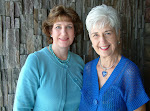"See You At the Pole" is an international day of student-initiated and student-led prayer. Throughout the world, young people will meet around their school flagpoles, or other designated spots, before the start of instructional hours. Beginning in 1990, the annual event takes place on the fourth Wednesday in September.
As a former private school teacher, I hold dear memories of our students gathering on this occasion to call on the name of the LORD.
Parents and grandparents can encourage our descendants and their friends to be part of this special gathering. We can also pray for students of all ages to take part, and to pray God's Will be done on school campuses. Adults desiring to pray that morning are encouraged to meet in alternate locations, so that students are allowed to lead their own prayer meetings.
Please set aside time on Wednesday, Sept. 22 to pray as our Lord taught:
Our Father who art in heaven
Hallowed be they name.
Thy kingdom come,
Thy will be done on earth, as it is in heaven.
Give us this day our daily bread.
And forgive us our debts, as we forgive our debtors.
And lead us not into temptation, but deliver us from evil.
For thine is the kingdom, and the power, and the glory, forever. Amen.
Matthew 6: 9-13
Lori






